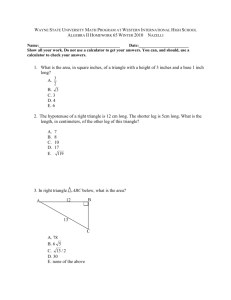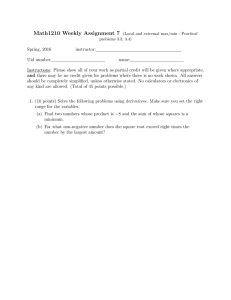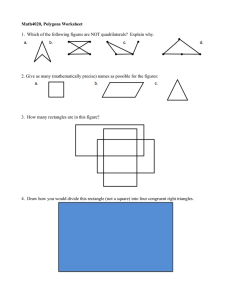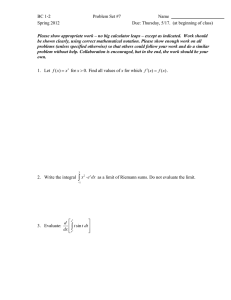TAP 206- 2: Deriving the equations of motion
advertisement
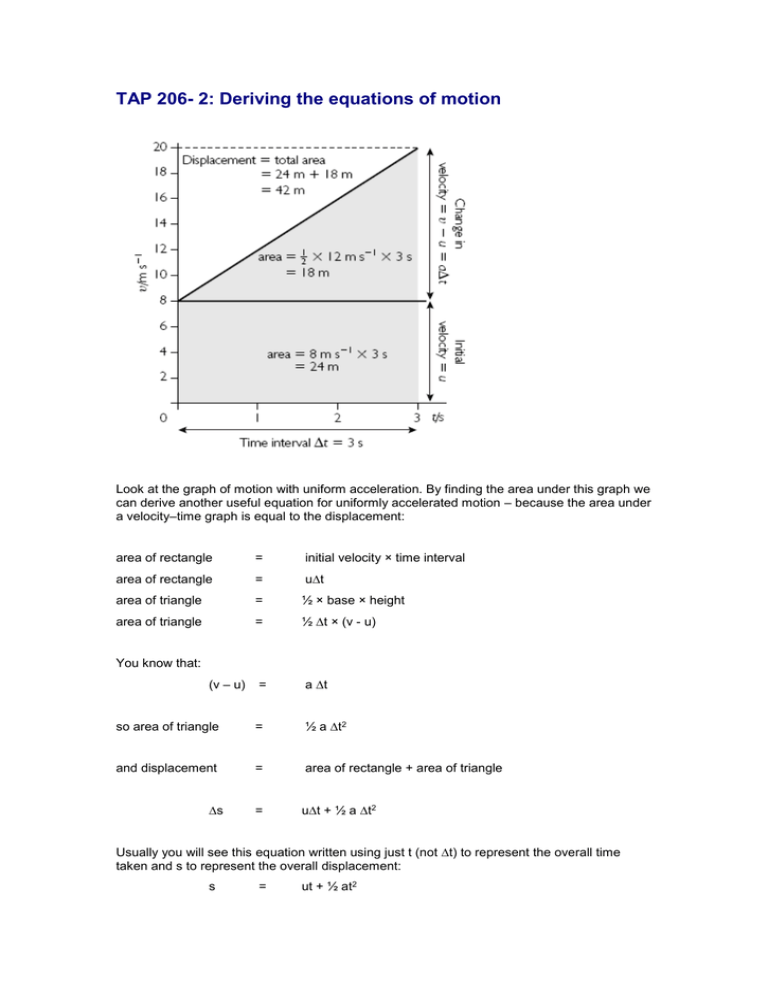
TAP 206- 2: Deriving the equations of motion Look at the graph of motion with uniform acceleration. By finding the area under this graph we can derive another useful equation for uniformly accelerated motion – because the area under a velocity–time graph is equal to the displacement: area of rectangle = initial velocity × time interval area of rectangle = ut area of triangle = ½ × base × height area of triangle = ½ t × (v - u) = a t so area of triangle = ½ a t2 and displacement = area of rectangle + area of triangle = ut + ½ a t2 You know that: (v – u) s Usually you will see this equation written using just t (not t) to represent the overall time taken and s to represent the overall displacement: s = ut + ½ at2 Use the equations that have you already met to show that: v2 = u2 + 2as Practical advice For many students, this might be the first time they have encountered the idea of a tangent to a graph, and the idea of a gradient. Make sure that they appreciate that drawing a tangent and finding its gradient is equivalent to calculating x/t (or v/t) using a very small time interval. You may need to explain the ‘delta’ notation to some students. They could do likewise with graphs generated by Multimedia Motion. (Multimedia Motion in fact does not simply measure the change in one time interval, but uses a more sophisticated technique using the data points either side, so the graphs generated by the software will not be quite the same as those generated by hand.) External references This activity is taken from Salters Horners Advanced Physics, Section HFS, Additional Activity 6
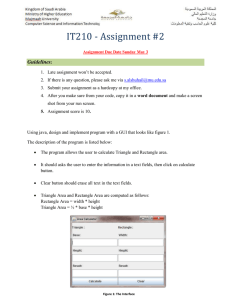
![Math 131 Practice Exam 3 on [ -1, 4].](http://s2.studylib.net/store/data/010538103_1-a851ef52d08f89241a99ddd9d94bbb2a-300x300.png)
